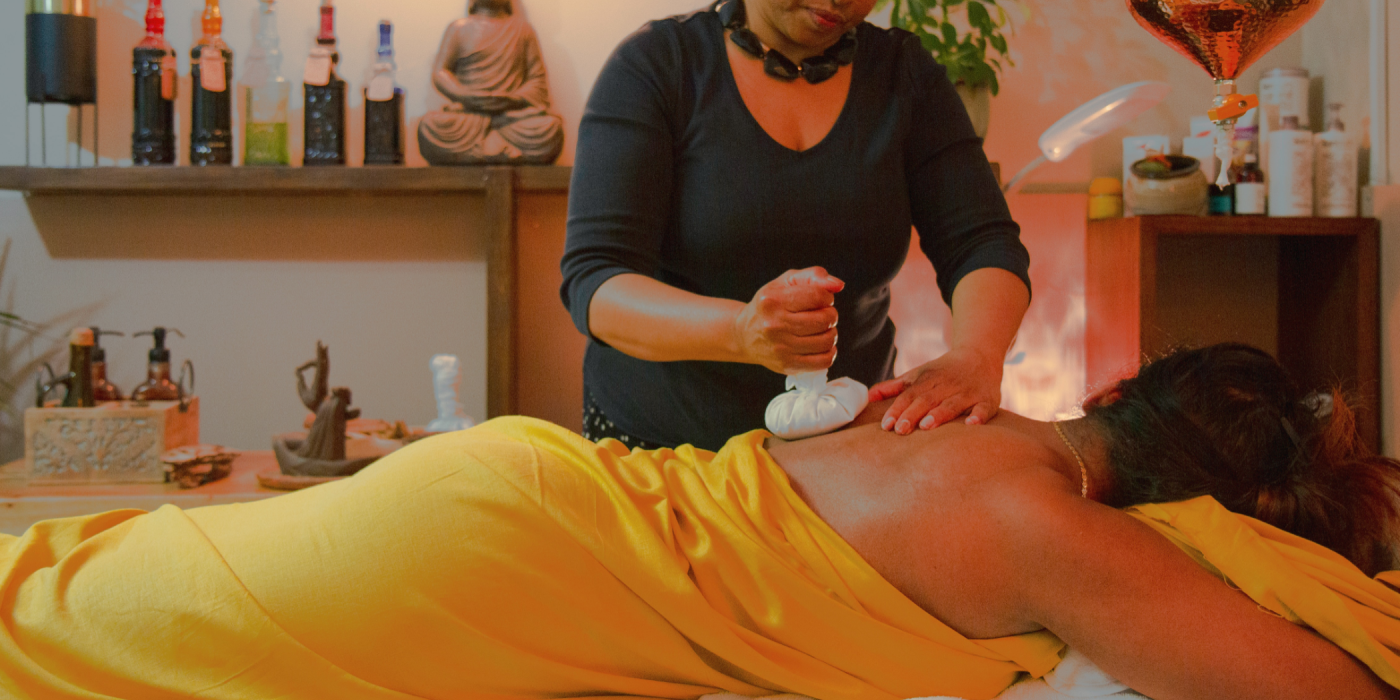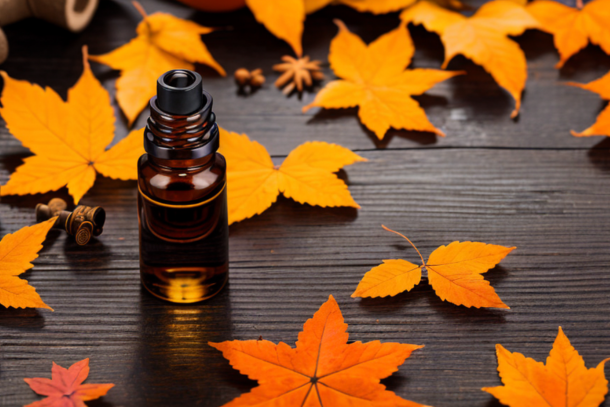Thai Massage: An Active Approach to Massage Therapy Enhancing Flexibility, Circulation, Energy

Thai Massage, often known as "Nuad Bo-Rarn" in its native country, is a holistic bodywork technique that combines acupressure, energy balancing, and stretching exercises. Unlike most traditional massage therapies that primarily use kneading and friction, Thai Massage integrates yoga-like movements, making it a more active form of bodywork.
The Historical Roots of Thai Massage
Originating in ancient India and influenced by Traditional Chinese Medicine, Thai Massage was introduced to Thailand along with Buddhism more than 2000 years ago. It's deeply rooted in the country's cultural practices and has been passed down through generations. Over the years, this therapeutic technique has gained international recognition for its unique approach and comprehensive health benefits.
Journey Ahead: Unpacking Thai Massage
In this article, we delve deeper into the distinctive aspects of Thai Massage, comparing it to other prevalent forms of massage and illustrating why it's more active. We will explore the techniques involved, the impressive health benefits it offers, and provide a sneak peek into a typical Thai Massage session. For those considering this form of therapy, we'll identify who can benefit the most, and answer some common queries about it. Join us in this enlightening exploration of Thai Massage and discover how it can improve your flexibility, boost your circulation, and enhance your energy levels.
The Unique Nature of Thai Massage
Comparing Thai Massage to Other Forms
When comparing Thai Massage to other forms such as Swedish and Deep Tissue massage, several distinctions become apparent.
Swedish Massage
Swedish massage often considered the standard for Western massage, primarily focuses on relaxation and tension relief. It employs long, gliding strokes, kneading, and tapping techniques on the superficial layers of the muscles, usually in the direction of blood flow towards the heart. It's a passive experience for the client.
Deep Tissue Massage
Deep Tissue massage, on the other hand, uses more intense pressure and techniques to reach deeper layers of muscle and fascia. It is particularly beneficial for chronic aches and pains, stiff necks, and tightness in the lower back or shoulders. It is more intense but still remains a mostly passive treatment for the client.
Thai Massage
In contrast, Thai Massage is a more dynamic and interactive form of massage. It combines elements of yoga, acupressure, and reflexology. Therapists use not just their hands, but sometimes their forearms, knees, or feet to perform a combination of stretching and pressure techniques.
The Active Nature of Thai Massage
The significant difference with Thai Massage lies in its active nature. Instead of lying passively, clients actively participate throughout the session. This active participation involves performing yoga-like stretches, guided by the therapist. This method helps enhance flexibility and range of motion, differentiating Thai Massage from most other forms, and offering a more engaging and energizing experience.
Techniques Involved in Thai Massage
Detailed Description of the Thai Massage Procedure
Thai massage is unique in that it's often described as a "lazy person's yoga." Unlike traditional massage types, where the client is passive, Thai massage incorporates yoga-like stretches, with the therapist helping to move the client into various positions.
The process typically begins with the client lying on a mat or firm mattress on the floor, fully clothed in loose or stretchy clothing. The massage therapist starts the session at the feet, gradually working upwards using their palms, thumbs, elbows, knees, and even their feet at times to apply rhythmic compressions along the body's energy lines, also known as 'Sen lines' in Thai medicine.
Highlight on the Active Involvement of the Client
Unlike most massage styles, Thai massage necessitates active participation from the client. The therapist guides the client through a series of yoga-like stretches, helping to adjust the body into these poses and encouraging a harmonious balance between relaxation and invigoration.
The client's role is to relax and to signal if any stretch or pressure feels too intense. This active participation not only ensures a safe and effective session but also makes the client an integral part of the healing process.
Demonstration of Typical Stretches and Poses in Thai Massage
There are a variety of stretches and poses that can occur during a Thai massage. For example, one common stretch involves the therapist holding the client's foot while stretching the leg into a hamstring stretch. Another pose might be a spinal twist, where the client lies on their side, and the therapist gently turns the upper body for a refreshing stretch.
The variety of these stretches helps stimulate different areas of the body, enhancing overall flexibility and promoting improved circulation and energy flow.
The Unmatched Benefits of Thai Massage
Thai Massage, often referred to as "the lazy person's yoga", isn't just about relaxation. It has a host of benefits that can significantly improve your overall wellness. Here, we explore how this ancient practice enhances flexibility, boosts circulation, and elevates energy levels.
Improving Flexibility with Thai Massage
The dynamic stretches and movements involved in Thai Massage go a long way in increasing flexibility. When a therapist guides your body through various yoga-like postures, your muscles are gently stretched, and your joints are mobilized.
Thai Massage and Increased Range of Motion
As your muscles and connective tissues get a gentle, yet profound stretch, your range of motion improves. This means better mobility and less likelihood of injuries, especially if you're an athlete or involved in any physical activity.
Boosting Circulation through Thai Massage
Thai Massage employs a complex system of compressions and stretches that stimulate your body's circulatory system.
Enhanced Blood Flow
As the therapist applies pressure, blood vessels are stimulated, facilitating better blood flow. This ensures efficient transportation of nutrients and oxygen to body cells, promoting overall health and wellness.
Stimulation of the Lymphatic System
Moreover, the rhythmic compressions used in Thai Massage are known to stimulate the lymphatic system, aiding in the removal of toxins and other waste products from the body.
Enhancing Energy Levels with Thai Massage
At its core, Thai Massage is about restoring balance and enhancing the flow of 'Prana' or life energy throughout the body.
Balance of Energy
By working on the 'Sen' lines (energy lines) and releasing any blocked energy, Thai Massage can lead to a feeling of rejuvenation and increased vitality, thus significantly enhancing energy levels.
Through Thai Massage, your body gets an opportunity to heal itself naturally, which is why this traditional form of therapy remains relevant and beneficial in the modern world.
Who Can Benefit from Thai Massage
Identifying the Ideal Candidates for Thai Massage
Thai massage can be beneficial for a wide variety of individuals, thanks to its holistic and therapeutic qualities.
Sports Enthusiasts and Athletes
People who engage in regular physical activities such as sports enthusiasts and athletes can greatly benefit from Thai massage. The dynamic nature of the stretches used in Thai massage can help relieve muscle tension, improve flexibility, and enhance overall performance.
Office Workers and Desk-bound Individuals
Those who spend most of their day sitting, like office workers, may also find Thai massage advantageous. It can help alleviate lower back pain, reduce stress, and counteract the negative effects of prolonged sitting.
Individuals Seeking Stress Relief and Energy Boost
Thai massage can also be an excellent choice for individuals looking for a holistic approach to stress relief. The unique combination of massage, stretching, and mindful breathing can promote relaxation and rejuvenate energy levels.
Contraindications and Precautions: Who Should Avoid Thai Massage?
While Thai massage has numerous benefits, there are certain cases where it might not be suitable.
Individuals with Medical Conditions
People with certain medical conditions such as severe osteoporosis, recent surgeries, uncontrolled hypertension, and certain cardiovascular conditions should avoid Thai massage.
Pregnant Women
Pregnant women, particularly those in their first trimester, should also be cautious. While prenatal massages are available, traditional Thai massage may be too vigorous. Always consult with a healthcare professional before starting any new treatment.
Remember, it's essential to consult with a trained therapist or healthcare provider to determine if Thai massage is suitable for you.
What to Expect During a Thai Massage Session
Description of a Typical Thai Massage Session
Thai massage differs considerably from other types of massage you may be accustomed to. Unlike the usual setting of a massage table, Thai massage typically takes place on a padded mat on the floor. Your therapist will use his or her body to move you into various yoga-like stretches, combined with deep muscle compression, joint mobilization, and acupressure.
The session often lasts between 60 to 120 minutes, although longer sessions are available. It's important to note that Thai massage is a full-body experience. The therapist begins at the feet and moves up the body, making use of every part of their own body—hands, knees, legs, and feet—to not only stretch you but also apply pressure and rhythmically rock your body in specific manoeuvres.
Preparation for a Thai Massage
Preparing for a Thai massage is a relatively straightforward process. Clothing is an essential consideration as you are usually dressed in loose or stretchy clothing to accommodate the stretches and movements. If possible, opt for clothing similar to what you would wear for a yoga class.
Ensure that you are well-hydrated and have eaten lightly prior to the session. It's also important to communicate your medical history, including any injuries or areas of concern, to the therapist before beginning.
Finally, approach the session with an open mind. It's a holistic approach that integrates various healing traditions, so it might be unlike anything you've experienced before. Embrace the experience and remember, the aim is not just to manipulate your body but to balance your energy as well.
Frequently Asked Questions about Thai Massage
Is Thai Massage Painful?
One common misconception about Thai Massage is that it's painful due to its active and deep nature. While it's true that Thai Massage involves stretching and deep pressure, a professional therapist will always work within your comfort level. Remember, any massage should never cause unbearable pain. Communication with your therapist is key.
Do I need to be Flexible for Thai Massage?
No, you don't have to be especially flexible to receive a Thai Massage. The therapist will adjust their techniques and stretches according to your flexibility level. Over time, regular sessions can even help to improve your flexibility.
What should I wear for a Thai Massage Session?
Unlike many other forms of massage, Thai Massage is usually performed with the client fully clothed in comfortable, loose or stretchy clothing. You do not need to disrobe, and no oils or lotions are used.
Is Thai Massage Safe for Everyone?
While Thai Massage has numerous benefits, it's not suitable for everyone. Those with certain health conditions like heart disease, osteoporosis, recent surgery, or pregnant women should consult their healthcare provider before scheduling a Thai Massage session.
How often should I get a Thai Massage?
The frequency of Thai Massage depends on your health goals and physical condition. For general wellness and relaxation, once a month can be beneficial. However, if you're dealing with specific issues like chronic pain, more frequent sessions may be helpful.
These questions cover some of the most common queries about Thai Massage, but it's important to consult with a professional therapist for personalized advice.
Wrapping Up: The Active Appeal of Thai Massage
A Recap on Thai Massage
Thai Massage, known for its active approach to bodywork, stands out distinctively among other massage forms. This unique modality, deeply rooted in the rich tradition and culture of Thailand, involves not just simple muscle manipulation, but also a series of stretches and poses. Unlike a traditional Swedish or deep tissue massage, Thai Massage requires active participation from the recipient, resulting in an experience that’s more akin to a passive yoga session.
The techniques utilized in Thai Massage are designed to provide a wide range of health benefits. From improving flexibility, and fostering better circulation, to boosting energy levels, the benefits are substantial and multi-fold.
Embrace the Benefits of Thai Massage
Given the uniqueness and the associated health benefits, Thai Massage is worth experiencing. Regardless of whether you're a fitness enthusiast seeking to improve your flexibility, an office worker looking to enhance circulation due to a sedentary lifestyle, or someone merely looking for an energy uplift, Thai Massage has something to offer.
Take the Next Step
Ready to reap the benefits of this unique and dynamic form of massage therapy? Why wait? Consider trying out a session and see the difference for yourself. Whether you are new to massage or an experienced spa-goer, Thai Massage can provide a refreshing break from the more passive forms of relaxation and pave the way for a revitalized sense of well-being.
Always remember to consult with a healthcare professional before starting any new therapy regimen, especially if you have specific health concerns. Now, go ahead and dive into the dynamic world of Thai Massage, a world of rejuvenation that awaits you.
Time to Experience Thai Massage for Yourself
Ready to Try Thai Massage?
Now that we've explored the ins and outs of Thai Massage, including its unique characteristics, the numerous health benefits it offers, and its transformative effect on flexibility, circulation, and energy levels, isn't it time you experienced this therapy for yourself? You may be surprised at how invigorating and restorative an active form of massage can be.
Scheduling Your Thai Massage Session
Many wellness centres and spas offer Thai Massage services. When booking your session, make sure to clarify that you're interested in Thai Massage specifically, as there are often many types of Massages available. It's also advisable to inform the therapist about any pre-existing medical conditions or concerns you might have. This ensures they can tailor the session to your specific needs and conditions.
So why wait? Immerse yourself in the Thai Massage experience and discover a new dimension of wellness today.
I do hope you have enjoyed this article and hope that you will subscribe to my newsletter so you can get the latest information about all things naturally relaxing.
Stay in touch, join the Naturally Relaxing Newsletter
Newsletter Signup
Post Your Comments
or post as a guest
Be the first to comment.
Latest articles in Relaxation

Capturing the Perfect Sunset: Tips and Techniques

The Benefits of Aromatherapy: Essential Oils for Relaxation

Embracing Calm: Innovative Ways to Relax in the New Year

Autumn Aromatherapy: Essential Oils for Relaxation

Embracing Autumn's Tranquillity: Finding Peace in the UK's Golden Season






